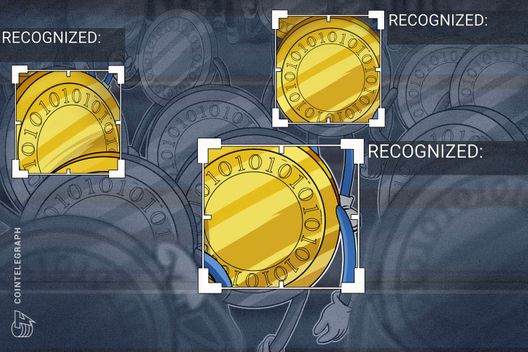In what seems to be one of the greatest crypto scandals 2019 has seen so far, the United States Attorney General in New York accused Bitfinex of using Tether’s cash reserves to cover a rumored $850 million funding gap with reserves meant for backing the stablecoin. Both companies share the same owner.
Now, the crypto exchange and the stablecoin have found themselves in hot water. At least $90 million worth of assets had left the Bitifinex wallets once the accusations were aired, while tether’s USDT peg remains almost unshaken.
Does the New York regulator have the legal rights to prosecute Bitfinex?
On April 25, the New York Attorney General’s (NYAG) office announced it was investigating iFinex Inc., the company that operates both Bitifinex and Tether. In the accompanying statement, Attorney General Letitia James accused the cryptocurrency exchange of losing $850 million and subsequently taking funds from Tether’s reserves to secretly cover the shortage.
Moreover, the state’s top prosecutor revealed that her office obtained a court filing alleging that iFinex and its associated entities were in violation of New York law in connection with activities that may have defrauded New York-based crypto investors. James stated:
“Our investigation has determined that the operators of the ‘Bitfinex’ trading platform, who also control the ‘tether’ virtual currency, have engaged in a cover-up to hide the apparent loss of $850 million dollars of co-mingled client and corporate funds. New York state has led the way in requiring virtual currency businesses to operate according to the law. And we will continue to stand-up for investors and seek justice on their behalf when misled or cheated by any of these companies.”
As per the court documents filed by Assistant Attorney General Brian Whitehurst, although iFinex is registered in the British Virgin Islands, it deals with some clients that are based in New York. Whitehurst subsequently highlights that neither Bitfinex nor Tether are licensed by the New York Department of Financial Services (NYDFS) to engage in virtual currency business in the state, while the agency “has promulgated regulations” within that field.
Selva Ozelli, international tax attorney and CPA, explained to Cointelegraph that the New York attorney general has jurisdiction over offshore matters under New York’s Martin Act. According to Ozelli, the agency’s interest in cryptocurrencies might have arisen in September 2018, when the OAG published its Virtual Markets Integrity Initiative Report, which set forth the findings by the office about the practices of “virtual asset trading platforms” that operate — or were believed to operate — in New York. Among the findings, she says that the OAG highlighted the “substantial potential for conflicts between the interests of the platform, platform insiders, and platform customers.” She also added:
“An offshore company like Bitfinex could carry on of a U.S. trade or business depending on the nature and extent of its economic activities in New York which must go beyond a single isolated act or transaction and involve considerable, continuous, and regular activity.”
Andrew Rossow, an attorney and law professor, also believes that the New York attorney general should have enough juridical power to get involved despite the fact that neither Bitfinex nor Tether is based in New York or has a BitLicense to operate there. He told Cointelegraph:
“There are two sources of law that allow for the New York Attorney General to get involved.
First, NYAG does have power as there is arguably a strong case for jurisdiction here. Under the law, the minimum contacts standard is used for determining whether jurisdiction exists.”
Rossow develops: “In this case, the NY AG believes that because Bitfinex is specifically availing itself to individual investors in New York, by means of allowing NY-based individuals to deposit, trade, and withdraw digital currencies, as well as engage in other transactions, there is sufficient contact within the State of New York to establish that jurisdiction. Therefore, with respect to protecting ‘its own,’ in this case, NY investors, the NYAG does in fact have power here.
“Second, the NYAG can invoke the ‘Martin Act,’ which broadly empowers the NYAG to conduct civil and criminal investigations for securities law violations. New York is a state that has demonstrated its leadership in this digital currency space, and therefore, has one of the most stringent state laws with respect to it. Obviously, with Wyoming’s Token Taxonomy Act (TTA), we have another powerful force on the field.”
Caitlin Long, the co-founder of the Wyoming Blockchain Coalition with previous experience of working for Wall Street banks, argued that the OAG showed double standards by using the Martin Act for the iFinex case while holding back when Merrill Lynch was doing something “quite similar” during the 2009-2012 period:
7/ So…#NewYork did good investigative work here but needs to be called to task on why the double standard, and why the “gotcha” approach? Why not do the same to #WallSt firms when they play similar shell games???
— Caitlin Long ? (@CaitlinLong_) April 26, 2019
Cointelegraph has contacted Long for further comment, but has not received a reply as of press time.
The filings detail how the Office of the Attorney General started investigating Bitfinex and Tether in 2018
As part of the probe, the Office of the Attorney General (OAG) requested information from third-party entities, including banks and audit firms, that have allegedly been involved in business with iFinex. By November 2018, the counsels for Bitfinex and Tether — jointly represented by the law firms Morgan, Lewis & Bockius LLP and Steptoe & Johnson LLP — had reportedly found out about the investigation and contacted the OAG on behalf of their clients.
On Nov. 21, 2018 the companies’ lawyers and the OAG discussed the case for the first time via email. The representatives of Bitfinex and Tether reportedly said they would provide documents and information to the OAG if the corresponding subpoenas were served. On Nov. 27, the OAG allegedly presented the subpoenas. The lawyers of Bitfinex then accepted the writ and began producing documents.
Three months later, on Feb. 21, the OAG and the counsels for Bitfinex and Tether held a meeting to discuss the investigation in person. At the meeting, Whitehurst claims, the representatives of the crypto companies explained to the OAG that Bitfinex has “had a succession of unsuccessful banking relationships around the world over the past several years” because many financial institutions have been reluctant to do business with “unregulated or off-shore companies” involved in cryptocurrencies.
Specifically, as per the court document, prior to 2017, Bitfinex and Tether “had used several Taiwan-based banks to make and receive wire transfers to fulfill client orders for U.S. dollars. and for other purposes,” with Wells Fargo acting as the correspondent bank. In March 2017, Wells Fargo allegedly declined to process U.S. dollar transfers from Bitfinex and Tether accounts. The companies were therefore forced to quickly find alternative arrangements, which is why they filed (but soon withdrew) a lawsuit against Wells Fargo, arguing that the bank’s decision “presented an existential threat to their business.”
In November 2018, Tether publicly announced establishing a banking relationship with Deltec Bank & Trust Limited, a Bahamas-headquartered entity. In the same statement, Tether also claimed that “USDT in the market are fully backed by US dollars that are safely deposited in our bank accounts.”
However, the prosecutors argue that Bitfinex never publicly disclosed its relationship with a Panama-based firm called Crypto Capital Corp., which supposedly started as early as 2014.
According to Whitehurst, Crypto Capital acted as a “payment processor” for Bitfinex and Tether, handling over $1 billion of its commingled customer and corporate funds, however “no contract or similar written agreement was ever entered into between Crypto Capital and Bitfinex or Tether.” Other “payment processors” reportedly included “friends” of Bitfinex, which the OAG describes as “human being friends of Bitfinex employees that were willing to use their bank accounts to transfer money to Bitfinex clients who had requested withdrawals.” As per the court document, prosecutors believe that the crypto exchange used the services of those payment processors because it had no reliable bank to work with.
Notably, the court filings feature alleged communication logs covering the period of April 2018 to early 2019 between a senior Bitfinex executive (“Merlin”) and an individual at Crypto Capital (“Oz”), which were allegedly produced for the OAG by the attorneys of Bitfinex and Tether.
According to the enclosed conversation, Bitfinex was experiencing severe problems with its clients’ withdrawals requests, as the crypto exchange essentially had no money to foster to them.
Thus, Whithurst writes that in October 2018, rumors began circulating online that Bitfinex clients were unable to withdraw their money. The same month, the crypto platform published a number of public statements suggesting that such hearsay was “a targeted campaign based on nothing but fiction.” Specifically, on Oct. 15, 2018, Bitfinex announced that “all cryptocurrency and fiat withdrawals are, and have been, processing as usual without the slightest interference.” According to the OAG, “that was untrue,” because on the same day, the senior Bitfinex executive (“Merlin”) supposedly wrote to his contact at Crypto Capital that “too many withdrawals waiting for a long time,” which is why he urgently needed the money from Crypto Capital, “in Tether or any other form.”
“Please understand all this could be extremely dangerous for everybody, the entire crypto community,” Merlin reportedly said.
“BTC could tank to below 1k if we don’t act quickly.”
Indeed, as Cointelegraph wrote around the time, Bitfinex had to temporarily halt fiat deposits in four fiat currencies — euro, U.S. dollar, Japanese yen and British pound — without specifying a reason for the suspension.
According to the documents cited by the investigators, at some point, an unidentified Crypto Capital representative explained to the senior Bitfinex executive that $851 million could not be returned to the crypto exchange because it had been seized by governmental authorities in Portugal, Poland and the U.S. Bitfinex and Tether lawyers reportedly told the OAG that their clients do not believe that the money had actually been confiscated.
“Line of credit”: how Bitfinex (allegedly) used Tether’s reserves
At the same meeting in February, Whitehurst writes, the lawyers of Bitfinex and Tether said that their clients “were in the process of contemplating a transaction that would permit Bitfinex to draw upon Tether’s cash reserves on an as-needed basis” in order to cover the missing $851 million.
Specifically, the filing states, the counsels explained that Bitfinex would take a “line of credit” of $600 to $700 million on the reserve funds backing tether. When asked by the OAG whether such a transaction would represent a conflict of interest given that Bitfinex and Tether are owned and operated by the same people, the lawyers reportedly described the planned deal as “arm’s length.” That “raised serious questions about the viability of Bitfinex as an ongoing concern, the possibility that Tether’s cash reserves would be dissipated and unrecoverable, and whether Bitfinex and Tether have misled their clients,” Whitehurst writes in the document.
Soon after the meeting took place, the prosecutors allegedly requested Bitfinex and Tether to provide more information on the contemplated transaction before March 7. Three days prior to that deadline, the companies’ representatives allegedly told the OAG that it was not possible to get this information in time. On March 11, and then on March 19, the respondents finally forwarded documents that, according to the OAG, turned out to be either blog posts by Bitfinex and Tether that had already been posted online or other information that was not relevant to the aforementioned “line of credit” transaction.
On March 29, the representatives of Bitfinex and Tether purportedly informed the OAG that the transaction had already taken place two days before. As per the document, they also described a previously undisclosed transfer of $625 million from Tether’s reserves to Bitfinex that allegedly took place in November 2018:
“During November 2018, Tether transferred $625 million held in its account at Deltec to Bitfinex’s account at Deltec. Bitfinex, in turn, caused a total of $625 million to be transferred from Bitfinex’s account at Crypto Capital to Tether’s account at Crypto Capital, through a ledger entry at Crypto Capital crediting Tether’s account in the amount of $625 million and debiting Bitfinex’s account by a corresponding amount. The purpose of this exchange was to allow Bitfinex to address liquidity issues unrelated to tethers.”
Neither deal had been disclosed to investors or customers, the prosecutors stress.
Therefore, the OAG’s ongoing investigation aims “to determine, among other things, the extent to which New York investors are exposed to ongoing fraud being carried out by Bitfinex and
Tether.”
Now, the court has reportedly ordered the operators of the companies to immediately cease the dissipation of the U.S. dollars that back tether tokens and to produce investigation-related information and documents. The ruling also prohibits the companies from destroying potentially related documents.
It is still unclear whether the missing funds belong to the company
According to Zhao Dong, one of Bitfinex’s shareholders, all of the missing funds might exclusively belong to customers, despite the OAG saying that both corporate and client assets represent the $850 million shortage. Dong reportedly said:
“What the information I have right now is there are no losses, but the funds belong to clients. If the U.S. government seized the funds, they should know, the funds doesn’t belong to Bitfinex or Tether, it’s the clients’ money.”
Moreover, Dong disclosed his conversation with Giancarlo Devasini, Bitfinex’s chief financial officer, who allegedly assured him that the situation is fixable and that the exchange needs “a few weeks and the funds will be unfrozen.” He continued:
“The funds were in several banks in Poland, [the] U.S. and Portugal, so I’m not sure but that’s what I heard.”
iFinex’s reaction: denial
On April 26, the same day the allegations were made public by the prosecutors, iFinex issued a response. In it, the head company controlling Bitfinex and Tether claimed that “the New York Attorney General’s court filings were written in bad faith and are riddled with false assertions.”
“We have been informed that these Crypto Capital amounts are not lost but have been, in fact, seized and safeguarded. We are and have been actively working to exercise our rights and remedies and get those funds released. Sadly, the New York Attorney General’s office seems to be intent on undermining those efforts to the detriment of our customers,” the statement reads.
Moreover, iFinex stressed that Bitfinex and Tether, who are “financially strong,” have been “fully cooperative” with the New York attorney general’s office, “as both companies are with all regulators.” The conglomerate also said it is going to challenge this and further actions of the prosecutors.
There has been no public comment from iFinex since then apart from a comment made on the Bitfinex subreddit by one of its moderators, who thanked those who supported the exchange and claimed that the iFinex CEO Jean Louis van der Velde has sent letters “to each and every one of you [Bitfinex clients].”
The content of that letter to users — in fact sent today, April 27, and seen by Cointelegraph — reiterates IFinex’s claim that the regulator’s allegations are false and that the company will challenge them. The iFinex CEO wrote:
“I am here to tell you that we are good actors in the digital token space. We continue to co-operate with regulators worldwide as they seek to learn more about our business.”
Cointelegraph has contacted Bitfinex and Crypto Capital and will update this article if more information is obtained from them.
Other reactions: Bitfinex and customers withdraw funds from the platform
In what could be seen as an additional reaction to the allegations, on April 26, Bitfinex reportedly withdrew funds worth almost $90 million from its cold wallet. According to reports from online transaction monitoring resource Whale Alert, those were mostly bitcoin (BTC) and ether (ETH) assets.
Moreover, on April 25, soon before the allegations were aired, Redditor u/jankeldidi drew attention to the fact that about 550 BTC from addresses connected to the 2016 Bitfinex hack were moved to unknown addresses. In August 2016, the hackers used a bug in the exchange’s multisignature system and withdrew about 120,000 BTC from Bitfinex hot wallets, worth the equivalent of around $72 million at the time.
Now that the scandal is unfolding, Bitfinex customers have reportedly began withdrawing their funds from the platform as well to prevent money loss. For instance, United Kingdom-based entrepreneur Alistair Milne allegedly took away an unspecified sum worth at least $1 million from his Bitfinex wallet.
Andrew Rossow told Cointelegraph that it is difficult to establish the potential outcome of this case at this point, given the absence of a broader regulatory framework:
“While laws like the Martin Act or TTA are just surfacing, what we are seeing primarily are cases of first impression with respect to how state and federal agencies, state and federal courts, and of course pre-existing and new federal laws are being applied to the realm of digital currency.”
“Again, we are seeing just how useful the Howey Test is and whether or not the law needs amending, or just to be overruled and re-written to cover both traditional investment contracts as well as 21st century digital currencies.”
Thus, even though the underlying offenses/allegations might be familiar, these cases are of first impression, in Rossow’s viewpoint. “Every state/court will be handling it differently, creating its own precedent, until finally the SEC [the Securities and Exchange Commission of the United States] and a federal court upholds one or multiple rulings,” he said, adding that the SEC is hiring a new legal cryptocurrency expert, which might result in more concrete regulations being introduced in the future.
Ozelli informed Cointelegraph that iFinex might face a number of harsh penalties as a result of the investigation — and even be driven off from the U.S. market altogether:
“Beyond NYAG’s action, if Bitfinex failed to comply with federal tax laws including FATCA reporting rules, which it would need to comply with since it serves US customers, it could face severe IRS penalties in excess of the unreported foreign assets, and exclusion from access to U.S. markets. It could also face penalties for violating FINCEN, OFAC, CFTC, SEC or other state laws.”
Tether’s peg lives on, despite yet another scandal
The crypto market experienced a moderate slump following the allegations against Bitfinex, as most cryptocurrencies lost 4-7% of their value. Tether, on the other hand, has kept close to its peg, trading around $0.99 as of press time.

Market visualization from Coin360 from April 26
According to Twitter user TrueUSD Printer, who monitors the circulation of various stablecoins, Tether added another $100,000,000 USDT to its total supply after the allegations were published. As the counsel for Tether reportedly explained to the OAG, new tether tokens are issued when “an investor has requested to purchase tethers by depositing U.S. dollars with Tether the company or by depositing U.S. dollars with a trading platform that is authorized to accept dollar deposits in exchange for tethers”.

USDT 7-day price chart. Source: CoinMarketCap
Notably, it is not the first time Tether has been targeted by officials. Originally known as Realcoin, Tether was launched in November 2014 by Bitcoin Foundation Director Brock Pierce. “All tethers are backed 100% by actual assets in our reserve account,” its official website stated as of January 2019 — and the company spent most of 2018 trying to prove this claim.
Problems initially arose when Tether failed to complete an audit of its accounts by a third party, which it promised back in 2017. After the community, including the litecoin creator Charlie Lee, took notice and urged the company to release the documents, things got worse — Bitfinex actually threatened legal action against critics. Both Bitfinex and Tether then received government subpoenas in December 2017 from the Commodity Futures Trading Commission (CFTC).
In late June 2018, it finally provided a document — although it turned out to be a memorandum completed by a law firm, not an audit performed by an auditing company. In response to the report, Tether’s general counsel, Stuart Hoegner, told Bloomberg that mainstream accounting firms would not conduct official audits on companies working with cryptocurrencies.
Around the same time, the University of Texas issued a research paper that essentially blamed Tether for Bitcoin price manipulation in 2017. Using algorithms to analyze market data, the document claimed that purchases with tether were timed after downturns in the cryptocurrency market, which made the Bitcoin value increase.
In August 2018, despite the criticism, Tether issued new tokens worth $50 million. In October, however, the company backpedalled and allegedly “redeemed a significant amount” of tokens from the circulating supply and “destroyed” 500 million USDT from its treasury wallet.
In December 2018, Bloomberg claimed that Tether actually had fiat reserves equal to the value of tokens in circulation after reviewing “bank statements.”
Interestingly, in March 2019, when Tether had already been contacted by the prosecutors, the stablecoin’s official website was altered. Now it claims that the tokens are backed by “reserves” that include currency, cash equivalents, and other assets and receivables.
According to market analyst Alex Krüger, who has analyzed the case in a series of tweets, tethers are currently 75% backed by USD and 25% backed by a loan (described by Bitfinex and Tether as a “line of credit” with an interest rate of 6.5%) secured by iFinex shares. Thus, according to global crypto investment firm Hash CIB, every tether is effectively worth only $0.76, with $700 million not backed by U.S. dollar reserves as of now, but transferred to Bitfinex as a “line of credit.”









